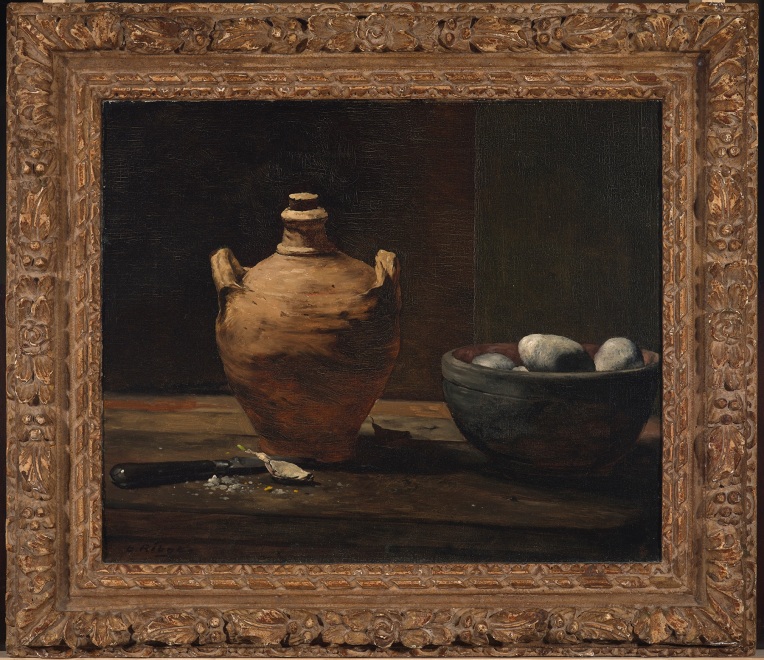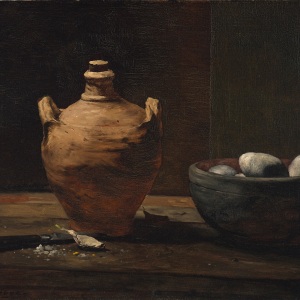Provenance
Kaplan Gallery, London.
Arcade Gallery, London.
Hazlitt Gallery, London, by June 1966.
Jacob Merrill Kaplan (1891-1987) and Alice Manheim Kaplan (1903-1995), New York, by March 1968.
H. Shickman Gallery, New York.
Private collection, Canada, 1972 (acquired from the above) (and sold: Christie's, New York, 19 November 1998, lot 183)
William Kelly Simpson, Katonah, New York (and sold: Christie’s, New York, October 31, 2017, lot 2)
Private collection, California (acquired at the above sale)
Catalogue note
In Still Life with Eggs, Garlic, and a Ceramic Jug, Théodule Ribot masterfully captures the essence of daily life through a striking composition that emphasizes both simplicity and texture. The painting features an array of elements: pristine eggs, robust garlic cloves, and a ceramic jug, each rendered with Ribot’s signature realism. The careful arrangement of these objects draws the viewer’s eye, creating a harmonious balance that evokes a sense of tranquility.
Ribot’s deft handling of light and shadow imbues the scene with depth, enhancing the tactile quality of the surfaces. The eggs glisten subtly, their smooth shells reflecting the soft illumination that graces the tableau. In contrast, the rough texture of the garlic and the earthy tones of the ceramic jug ground the composition, creating a dialogue between the varied materials.
Ribot’s paintings were the subject of a recent exhibition in 2022, Théodule Ribot: Une délicieuse obscurité, at the Musée des Augustins, Toulouse, the Musée des Beaux-Arts, Marseille, and the Musée des Beaux-Arts, Caen, which featured a compelling collection of his works alongside those of his contemporaries and influences. These still lifes are highly important to Ribot’s oeuvre, as they encapsulate his profound engagement with the textures and forms of everyday life. Through his compositions, Ribot elevates simple objects—like eggs and garlic—transforming them into vehicles for reflection on cultural practices and the passage of time.
By foregrounding these humble subjects, Ribot not only honors the culinary practices of his time but also situates his work within a tradition that values the commonplace, allowing viewers to experience a moment of connection with the past. This painting stands as a testament to Ribot’s ability to transform the ordinary into something extraordinary.
This note was written by Elsa Dikkes.




